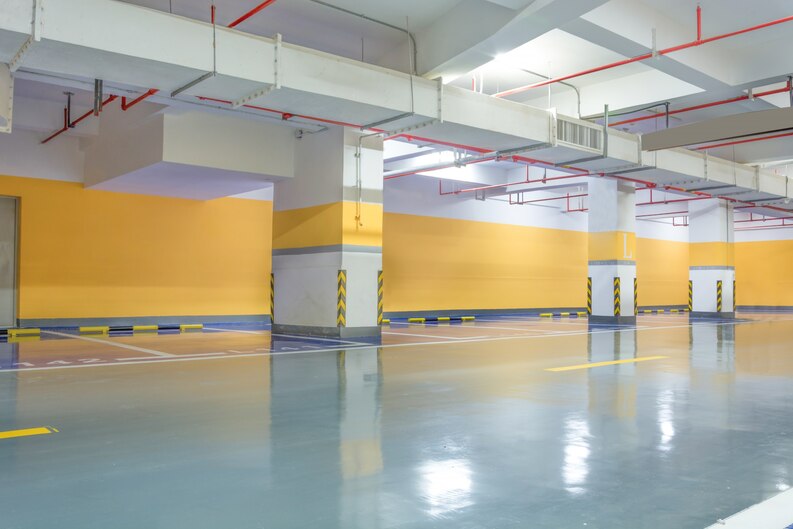ZeroStat Crete EP 1000 is a high-performance epoxy coating with antistatic properties and easy cleanup capabilities, suitable for most chemicals.
Resistivities of antistatic epoxy resin coatings change with increased quantities of double comb-like quaternary ammonium salt polymers, while water contact angles decrease as their addition reaches 1.0 weight percent.
The Benefits of Anti-Static Epoxy Flooring
Anti-static epoxy floors for your industrial floors reduce the risk of electrical machinery and equipment being damaged due to static interference or electrostatic discharge (ESD). They’re especially helpful for mission-critical environments like air traffic control sites that depend on continuous use of electronic equipment.
Anti-static epoxy floor coating differs from standard resin coatings in that it contains small amounts of carbon or graphite that permit electric current to pass through it, making it electrically conductive flooring option and grounding system when coupled with copper tubing or strips installed into the floor – dissipating static electricity away from employees and equipment instead.
Static control is a top priority for businesses dealing with sensitive electronics or volatile chemicals, powders and liquids. Without appropriate flooring and equipment, businesses risk suffering costly damages from static discharge to inventory, products or staff members. Anti-static epoxy flooring has been specifically developed to safely dissipate static charges – making it popular choice in hospitals and other commercial settings which demand high levels of safety.
Anti-static epoxy blends are popular because of their long-term wear-resistance against shock, extreme heat, chemical and fire damage. Easy to install over existing floors with great traction as well as anti-slip properties; once cured the floor can be covered again using compatible floor finish products to further improve durability and aesthetic appeal.
ESD Floors
Anti-static floors are essential in environments where static discharge poses a major hazard, such as manufacturing plants. Static electricity builds up when workers move around their workspace, only discharging when touching something metal or conductive; unfortunately this discharge can damage electronic equipment easily as well as cause explosions when handling explosive materials or explosive substances.
ESD floors use conventional resinous flooring coatings with embedded conductive elements (usually metal particles) that capture static electricity as it is generated, transporting it down via copper tubing or strips installed with the floor, and ultimately prevent its discharge – so your products and people remain unaffected during work activities.
Conductive and Dissipative ESD floors can help your workplace remain safe from static charges by easily discharging electrostatic charges to ground. Conductive floors offer low resistance values which allow electrostatic charges to pass quickly through, eliminating the build-up of static charges in your workspace. Conversely, dissipative floors have higher resistance values so electrostatic charges have difficulty moving along their journey toward ground, thereby preventing their build up in your workspace.
ResinDek panels with gray Diamond Seal ESD are an ideal solution for businesses that require a highly durable, wear-resistant floor suitable for robotic traffic. Certified as compliant with ANSI/ESD-S20.20, this cost-effective and reliable option can transform the appearance and reliability of any facility.
Electro-Static Dissipative Floors
Static charge is generated whenever two materials come in contact and then separate, with its direction depending on whether each material is conductive or insulative as well as environmental conditions. Floor coatings offer various levels of static control depending on their resistance to body voltage, or how quickly electricity passes through them.
Lower electrical resistance flooring allows electrons to pass more freely, discharging any static charge built up and thus helping prevent the buildup of charges that can damage sensitive electronic equipment.
Conductive floors can be beneficial in various industries, particularly aerospace or telecommunications. Even 10 volts of static charge can damage high-tech electronics; lightning strikes with such voltage could put people in an office environment at risk and possibly spark fires at laser or optical facilities.
ESD flooring should be combined with other anti-static safety measures, like wrist straps and table-top mats to provide optimal anti-static safety. When choosing an ESD flooring manufacturer, be sure they offer factory trained installers as well as post installation ESD testing to ensure that it will meet both your specific requirements and industry safety standards for equipment operation.
Electro-Static Dissipative Epoxy
Static Dissipative resins are ideal for applications where both electrostatic discharge control and chemical resistance are essential, making them easy to sanitize, decontaminate and clean.
Most of us have encountered static electricity while taking clothing from the dryer or brushing their hair – usually when pulling something out at once! This process, known as static discharge, occurs when electron charges from one electrically charged object transfer to another such as ground.
Energy transfer (which creates the spark or ESD event) can cause substantial damage to electronic devices and components in environments sensitive to ESD events, from small sparks which may not even be visible in darkness, all the way up to electric shocks that are felt and can be painful or destructive.
Master Bond provides several ESD-safe flooring solutions, such as Floropoxy ESD. This 100% solids four-component epoxy system offers electrostatic dissipative properties to provide electrostatic dissipative properties suited for aircraft hangars, electronics manufacturers, data processing, hazardous environments (dust or explosive environments) photographic or graphic arts processing facilities and photographic or graphic arts facilities. Floropoxy ESD features high abrasion resistance and UV stability as well as surface resistivity of less than 1×10 5ohms/square – this provides lower surface resistance than conductive materials while surpassing insulative materials which cannot provide safe environments in ESD environments.

